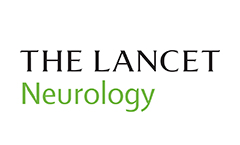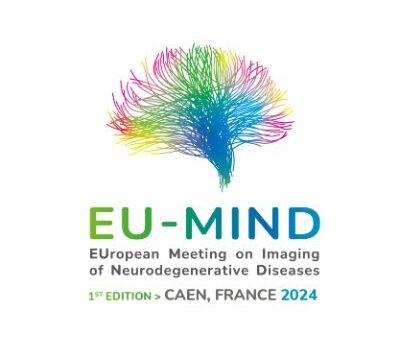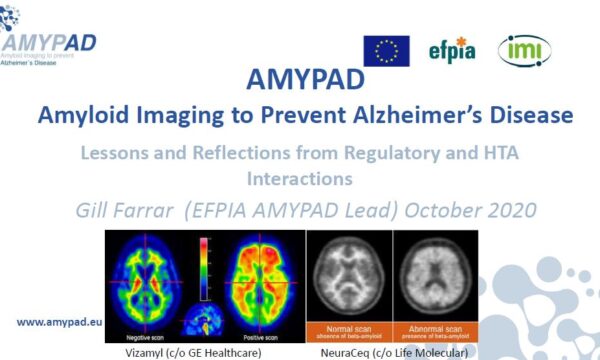What is your current role on AMYPAD?
I am the Chief Medical Officer for Life Molecular Imaging (LMI). LMI is providing florbetaben for amyloid imaging to AMYPAD along with flutemetamol from GE Healthcare. In my role, I try to coordinate the efforts of the LMI team with respect to AMYPAD. There are three topics I am particularly interested in:
- Standardization of quantitation. In the future, I would like to see quantitative methods of amyloid-PET Imaging analysis used routinely in the clinic and not just in specialised research centers. As the field focuses increasingly on early disease the role of quantitation becomes more important. The centiloid methodology is good, but I am not sure in can be accurately and appropriately used in routine clinical practice just yet. The work being done within AMYPAD standardises images from multiple tracers and many imaging sites will be fundamental in understanding the process.
- Clinical Utility of Amyloid Imaging. For amyloid imaging to realise its potential clinical utility must be proven. Clinicians outside research centers must understand the value amyloid PET brings to their patients. As a community we have not done a good job of showing the value. Part of the reason is because it is a very difficult question: Alzheimer’s disease is a chronic disease that develops over many years and there are not yet disease-modifying treatments. The AMYPAD Diagnostic and Patient Management Study (DPMS) study is designed to show the value of early diagnosis and where in the diagnostic pathway of the work up for patient with cognitive impairment is amyloid PET best implemented. Again I think this will provide certainty to clinicians as to when they should order the study. We worked very hard on the study design to provide answers that would be important to physicians.
- Health Economic value. Previously it was assumed and stated by regulatory bodies that improved visualisation of pathological processes would necessarily lead to improved patient care. This is no longer the case. We must show that any new diagnostic agent has a measurable improvement in patient care. One measure of value is that the new procedure leads to lower cost of overall patient care or improved quality of life that would lead to decreased procedures and physicians visits, increased ability to maintain lifestyle and perhaps career, decreased hospitalisations, and/or decreased institutionalisation. I am very excited about the possibility of the DPMS to address these questions. There are very few data to address these issues in the field. AMYPAD was designed from the beginning to ask these questions and the we will see if AMYPAD can have a meaningful impact.
What is your overall vision?
As above. I am passionate about the use of improved molecular biomarkers to improve the diagnosis and care of patients with life-threatening diseases. PET is a very powerful technique to assess pathological processes in vivo. I would wish that we are able to push this technology with improved clinical trials, improved imaging technology and methodologies, improved analytics, and additional tracers to assess additional processes (e.g. tau, neuroinflammation, alpha-synuclein).
What do you find most challenging about the project?
The strength and challenge of AMYPAD is the multi-center involvement. Keeping all sites on board and moving in the same direction. The amount of specific site and country specific approvals are amazing. I am in awe of the team for being able to productively engage so many sites. Of course, COVID has not helped. Phenomenological studies without direct therapeutic intent were the first to be shut down. It affect AMYPAD a lot. That we were able to continue to progress AMYPAD is a testament to the conviction of the entire AMYPAD community.



